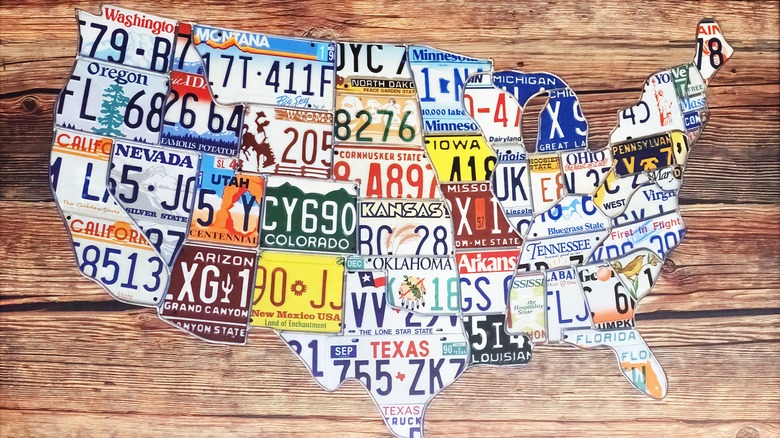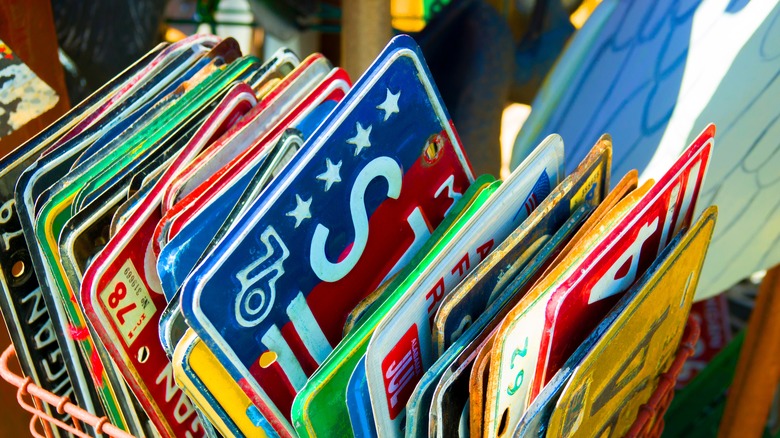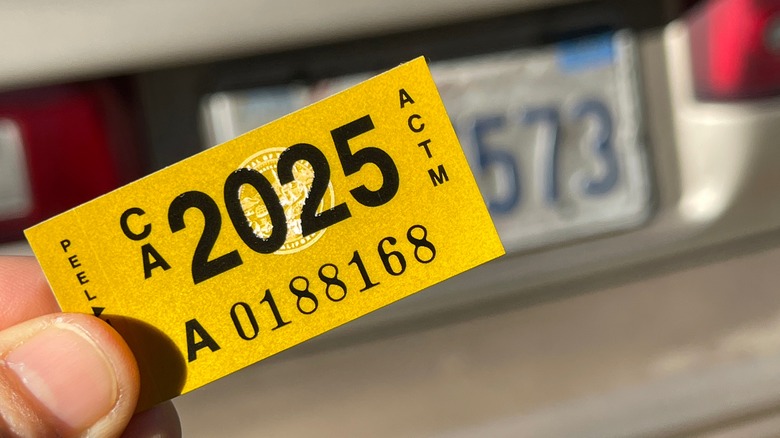How To Clean Your Car's License Plate (And Why You Might Want To)
We may receive a commission on purchases made from links.
Since 1901, license plates have been part of the American car owner's experience. They work as a form of identification that can help authorities fine road violators and find lost or stolen vehicles. Having a rear license plate is non-negotiable for U.S. drivers, and over half of all American states require front license plates, too. While some bad actors purposely make it difficult for police to track their plates, there are plenty of less nefarious reasons why a license plate can be difficult to read, including natural wear and tear, and being filthy from being exposed to mud or dirt.
Thankfully, the process of cleaning modern license plates is pretty straightforward, especially for minor surface-layer issues. After unfastening its screws and removing it from your vehicle, all you have to do is clean the license plate with an all-purpose cleaner. If your license plate is getting rusty, a little spritz of WD-40 can help break it down first. You may also want to use a Q-tip, so you don't miss cleaning the tight corners in between the letters or numbers. Lastly, dry it with a microfiber towel before screwing it back on your car.
But cleaning your license plate with the wrong materials can lead to problems, because older license plates can be more prone to damage. So if you're trying to revive a vintage license plate, here are some additional tips.
How to clean collector license plates
If you have a special license plate, like a California plate that's valued at over $24 million, you can't just use any cleaning solution. When it comes to cleaning collector's items, the Automobile License Plate Collectors Association cautions against using all-purpose surface cleaners, which can both wipe off ink from recent graphic plates and break down the paint on older license plates. Some other common cleaning materials it says can inadvertently damage your license plates include abrasive car polishes, Dow Bathroom Cleaner, and Bar Keepers Friend, which are both known to bleach or fade license plate paint.
Alternatively, the collectors' association recommends car wash soap for surface dirt and Fast Orange Cleaner (but not the pumice kind) for grease removal. It recommends Iron Out, Korkay Spray Cleaner, and WD-40 to remove light rusting, and Naval Jelly for more serious rust (while warning that it's a strong acid that can burn you and remove paint if used improperly).
When it comes to decal removal, it's important to note that while lighter fluid can help with making it easier to scrape off, it's still flammable. To prevent accidental scratching when getting rid of the decal, a razor or X-Acto Knife is ideal for better control.
Why keeping your license plate clean matters
Aside from the obvious aesthetic impact, there are also legal implications to having a license plate that isn't visible or legible (though there may be some exemptions, such as if the reason it's obstructed is because a person with disabilities has a wheelchair lift or carrier). Depending on the state, penalties for license plates that can't be read easily will vary. For instance, in California you can be fined $196 even if your license plates were simply covered by mud. The fine in Rhode Island for a plate that's obscured, though, is only $85.
As law enforcement increasingly uses cameras and AI to track license plates, there also are penalties to discourage you from blocking your plate from being captured electronically, such as by erasing or painting over its reflective coating. In California, this can get you hit with fines of up to $250 for every violation.
If your license plate is too far gone to be read easily, you may want to be in touch with your local Department of Motor Vehicles for a replacement. Depending on your state, the steps for replacement vary, but you'll need to provide some personal information along with a fee. In some states, such as Connecticut, you can even file for damaged-plate replacement online.


